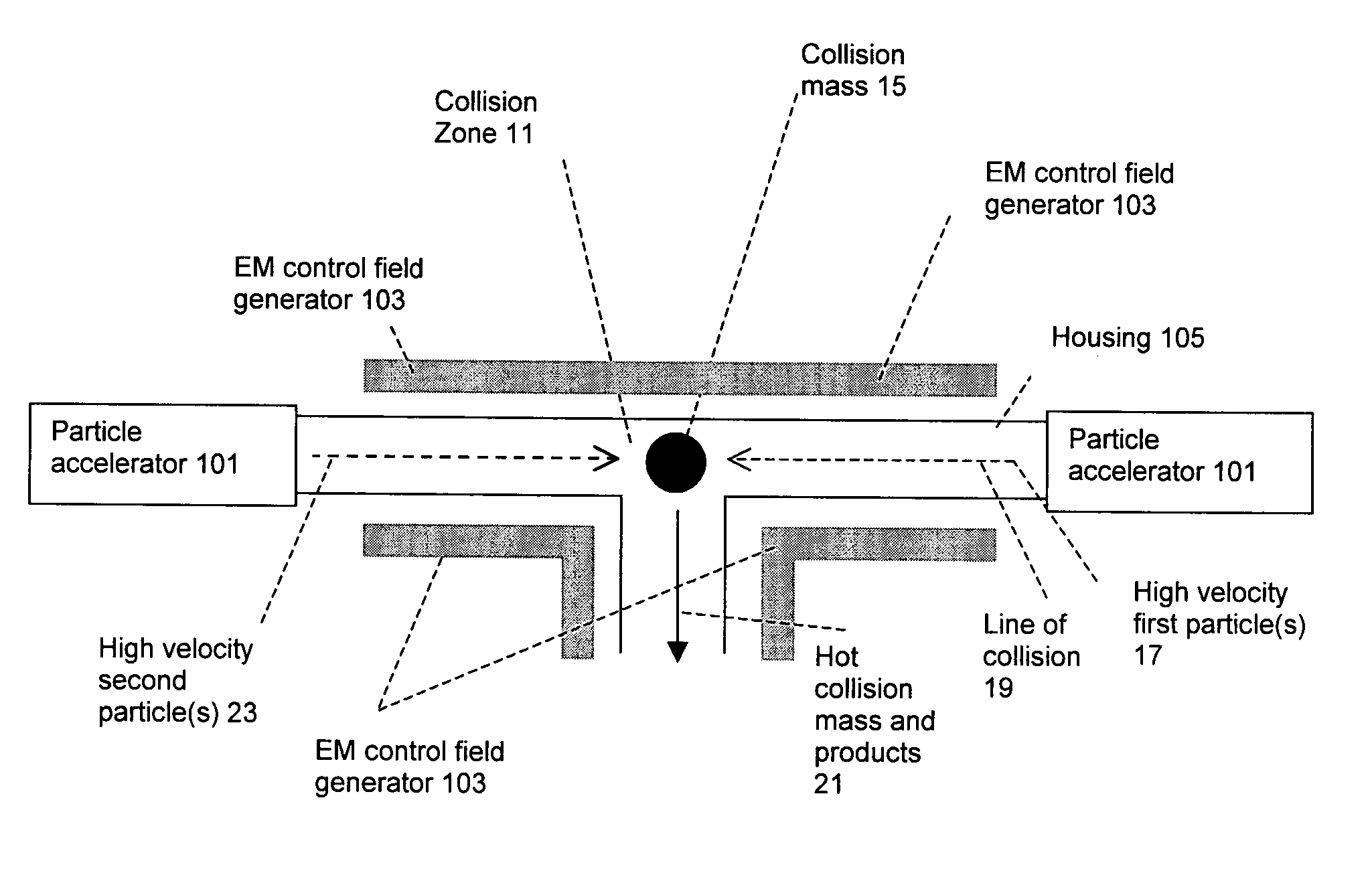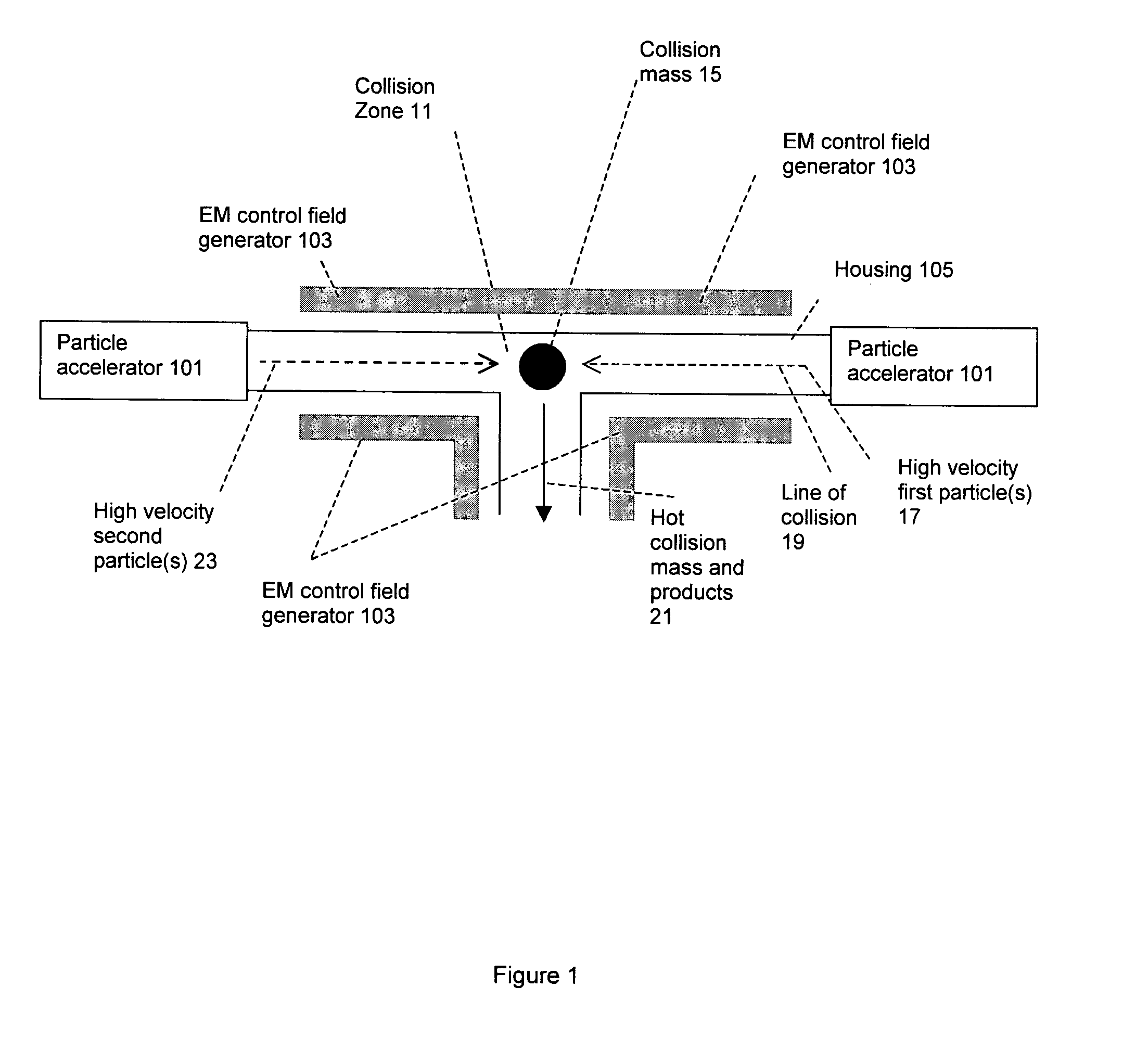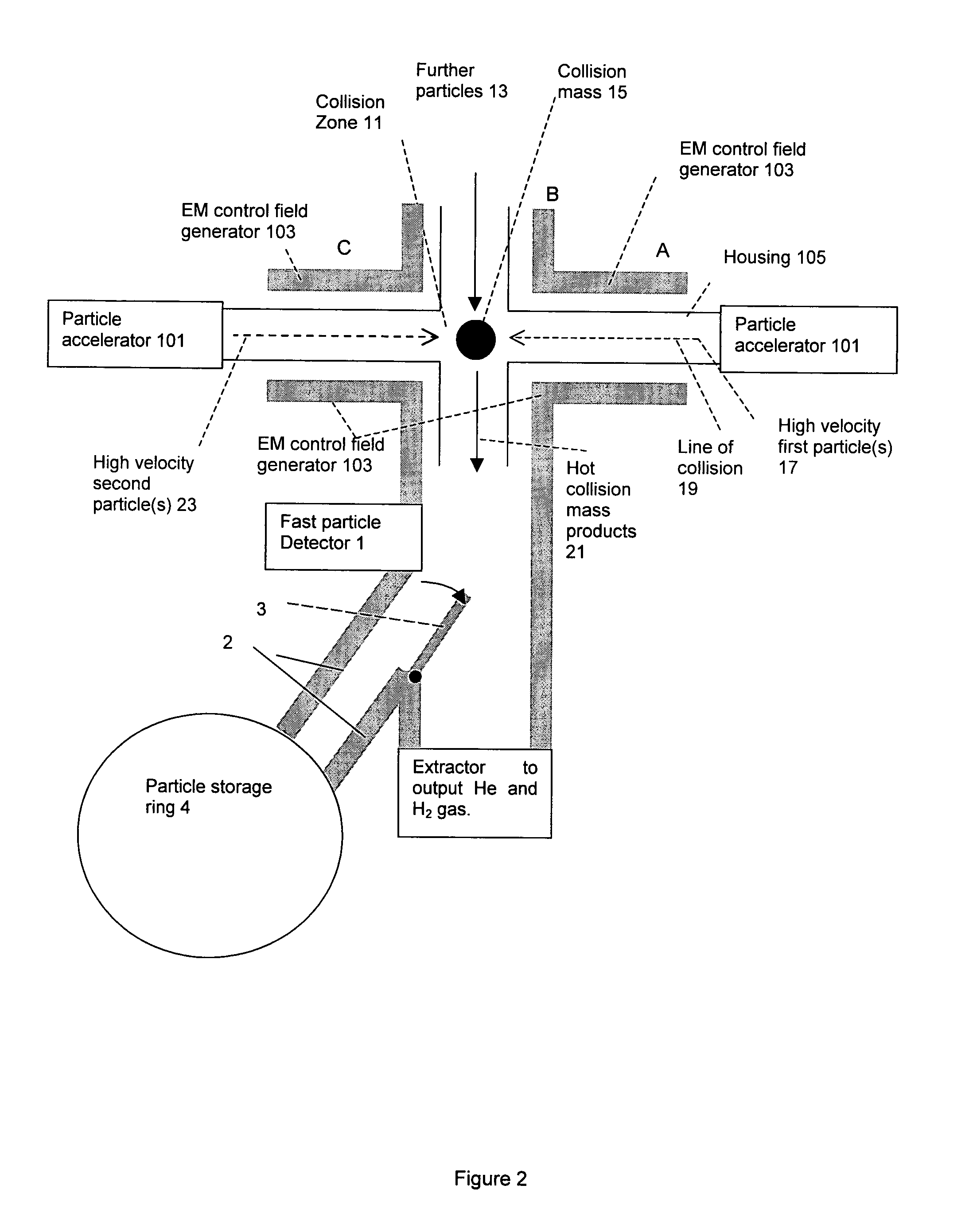Method and apparatus for reducing the radioactivity of a particle
a particle and radioactivity technology, applied in electrical devices, nuclear energy generation, nuclear reactors, etc., can solve the problems requiring a century, a millennium or even longer, and no known process for accelerating the decay of radioactivity in materials, etc., to achieve the effect of reducing the radioactivity of particles
- Summary
- Abstract
- Description
- Claims
- Application Information
AI Technical Summary
Benefits of technology
Problems solved by technology
Method used
Image
Examples
Embodiment Construction
[0033]Referring to FIGS. 1-3, and the flow chart of FIG. 4, a particle accelerator 101 or other accelerator is used to accelerate one or more first particle(s), preferably ion(s) or heavy ion(s) 17 to a first velocity with a high speed component which is preferably a speed comparable to the speed of light, step 41. This is performed under a partial vacuum. The partial vacuum must be sufficiently low pressure so that the particles can be accelerated to the required speeds. The accelerator 101 or second accelerator is also used to accelerate one or more second particle(s), preferably ion(s) or heavy ion(s) 23 to a second velocity with a high speed component which is preferably a speed of about a third of the speed of light, step 45. Once again, this is performed under a partial vacuum.
[0034]The trajectories of the two accelerate particles is arranged such that when the particles meet in a collision zone 11, the directions of the velocities of the first and second particle(s) are subst...
PUM
 Login to View More
Login to View More Abstract
Description
Claims
Application Information
 Login to View More
Login to View More - R&D
- Intellectual Property
- Life Sciences
- Materials
- Tech Scout
- Unparalleled Data Quality
- Higher Quality Content
- 60% Fewer Hallucinations
Browse by: Latest US Patents, China's latest patents, Technical Efficacy Thesaurus, Application Domain, Technology Topic, Popular Technical Reports.
© 2025 PatSnap. All rights reserved.Legal|Privacy policy|Modern Slavery Act Transparency Statement|Sitemap|About US| Contact US: help@patsnap.com



